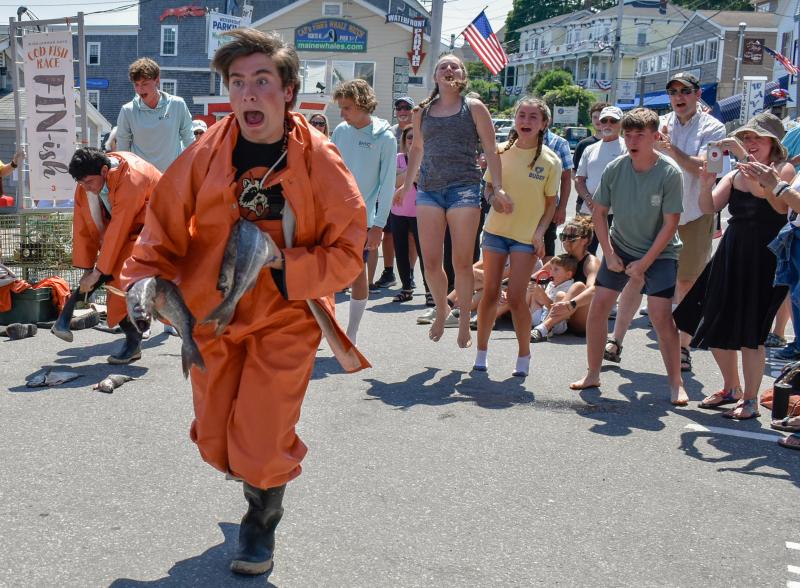The Santa Maria Valley’s rich sporting history was on display Sunday at the Santa Maria Elks Lodge.
In the lodge’s banquet room, artifacts and memorabilia dating back to 1926 were displayed for a free trip back in time as the Santa Maria Valley Sports History Club hosted another of its regular All Sports History shows celebrating the region’s rich and diverse sports history.
“Our schools teach history, but not this history,” said Ernie Corral, one of the founders of the History Club. “We may be a small town, but our local athletes have really done great things. We have exhibits that not only highlight and honor our local teams, but also some of the athletes who have made it to Major League Baseball, NFL football, the National Hot Rod Association (NHRA), the Olympics and more.”
All levels of local baseball and softball were represented, from pre-Little League days through Babe Ruth, the high schools, Hancock College and the Santa Maria Indians.
“I brought the trophy from the 1926 Santa Maria team that won the local baseball championship. That was before Little League officially began,” said Al Ramos, another founder of the Sports History Cub. “The Guadalupe team, sponsored by Guadalupe Produce, won the championship the next year. That team later went to Japan and achieved a record of 27-3.”
Ramos himself was the star of the Santa Maria Little League team from 1954 to 1957.
“Back then, there was only one team in town,” Ramos said. “I made the All-Star team in 1956 and 1957 when I was 11 and 12 years old.”
“I love this 1944 Santa Maria Indians display,” said Delbert Corella, a Nipomo resident and 1958 Arroyo Grande High School graduate. “The team had two Ray Andersons. In the picture, you can see that one of them was named Ray and the other was named ‘Mutt.’ My uncle was named Mutt Anderson. I believe he later coached the Indians.”
Legendary Santa Maria High School swim coach Karl Bell, 87, was a member of the SMHS swim team in the mid-1950s.
“Our 1954 team went to the CIF and finished fifth,” Bell said. “Back then, there was only one high school in Santa Maria and the CIF only had one division, so for us small-town kids to finish fifth was a pretty big deal.”
“Eugene Lenz was the star of our 1956 team. He went to Yale and competed in the 1960 Olympics.”
After graduating from Cal Poly in 1960, Bell returned to Santa Maria to teach science and physical education for 35 years while also coaching swimming and water polo at Santa Marua High.
Today, the Santa Maria Saints swim and play water polo at the swimming center named after him, the Karl Bell Aquatic Center.
Blas Torres fought his way to fame.
Now 93 years old, Torres was successful in the boxing ring, achieving a record of 50-4 and winning the Golden Gloves middleweight championship in 1950.
“I fought for the U.S. Army,” Torres said. “I started as a lightweight, but they fed me too much, so I moved up to welterweight and middleweight and then, after I won the Golden Gloves championship, I quit.”
“I wanted to keep going. I had what it takes to make it to the pro league, but my wife wanted me to quit, and when your wife says it’s time… then it’s time.”
“It was hard, but I enjoyed it. If I could, I would go back there tomorrow.”
The famous Golden Dukes basketball team and the two national title holders from Hancock College were represented.
Three books have been written about the valley’s sports history.
“Eddie Navarro, Ernie Corral and I wrote three books,” Ramos said. “They’re full of pictures and stories about local sports history. We wanted to write something to give some recognition to the people and the sports and the rich history we have here. People should know that. They shouldn’t forget it.”
“I wish we had more young kids coming to these events. They are the future history of the Santa Maria Valley and they should see what came before them,” said Navarro, the third founder of the Sports History Club. “One day, 30 or 40 years from now, people will see the kids of today as the old guys who are part of the sports history of the valley.”
“We just want to pass on the memories. It helps us keep these old hands alive. These Sports History Club programs are like a family reunion. They give us a chance to bring everyone together and become little boys and girls again. It’s worth it.”




